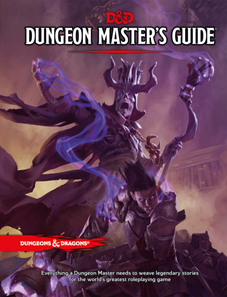 Designing a basic adventure for Dungeons & Dragons isn’t hard. Just draw a map, put some monsters and treasure in it, and you’ve got an adventure! It’s one of the reasons that D&D remains the most dominant role-playing game on the market: it isn’t hard to create an adventure for your players.
Designing a basic adventure for Dungeons & Dragons isn’t hard. Just draw a map, put some monsters and treasure in it, and you’ve got an adventure! It’s one of the reasons that D&D remains the most dominant role-playing game on the market: it isn’t hard to create an adventure for your players.
However, just going into a dungeon and killing monsters proves – after a while – to not be enough. Players demand to know pesky details like why the monsters are in the dungeon, what they’re doing, and why their characters should be going in there!
So, let’s discuss some of the features of adventure design.
Possibly the most important error I see in adventures is in not giving sufficient information to the players. I’m going to return to this point again and again, so get used to it! Basically, any game involves the players making decisions. If the players don’t have the information they need to make those decisions, they’ll get frustrated. Imagine an adventure where you need to open a door with a password to complete it successfully, but there’s no way of learning the password. That’s a failure as an adventure.
The ways in which you can present information and what information is important? That will be a major feature of these articles.
At the beginning of any adventure, players have an objective. It can be one they select themselves or one that they are given. They can even have several objectives. An objective provides them with something to achieve. A few example objectives from recent D&D Adventurers League adventures:
- * Sell a fake dragon egg to a smuggler
- * Find a thief and recover the wand he took
- * Find out where the eldest son of a noble family is
- * Rescue two trappers
- * Protect the town from an attack
The basic D&D assumption is “kill monsters and take their treasure”. It’s not terribly complex.
We can describe this as being the objective of a quest. As you can imagine, if the players don’t know what the objective is, then they’ll have a lot of trouble completing it. Make sure the players have a goal at the beginning of an adventure and they know what it is.
Interestingly, the objective players have at the beginning of the adventure might not be their objective by the end of the adventure. This is because an adventure can contain more than one quest. There are points when one quest ends and another quest starts, or when an additional quest needs to be completed before the first can resume. Consider The Lord of the Rings. The first quest Frodo has is to get the Ring to Rivendell. He successfully completes that quest, but then discovers that he’s the best person to destroy the Ring by taking it to Mordor. The second quest is to get the ring to Mordor.
There are times when the quest changes because of new information. “Rescue the two trappers” suddenly becomes “Rescue the two trappers and their friend”.
As a corollary to “let the players know what their quest is”, you should also let the players know when their quest finishes! I’ve seen a couple of instances where the means of completing the quest is so obscure that the players haven’t realised they have completed the adventure!
Furthermore, work out what the endpoint of the quest is and be sure it appears in the adventure. One of my recent problems with The Ghost is that there was a very clear objective: “Discover what happened to Donali”, but it was never mentioned again. Bit tricky to solve that one when even the DM doesn’t know what happened…
It’s fine for a quest to always end in a failed state. “Rescue two trappers” might end with you finding them both dead. However, you should generally try to let a quest that can’t be completed successfully transition into a quest that the players can complete successfully. Death in the Cornfields, my own DM’s Guild adventure, does a form of this.
And, yes, you can have more than one quest active at the same time. Your classic D&D dungeons are more the setting for an adventure than an adventure in themselves; the DM and players can then set quests in the adventure for them to achieve.
So, when you’re designing an adventure…
- * Make sure the players start with one or more objectives and they know what they are
- * Make sure the players can complete (successfully or unsuccessfully) each objective
- * If the players can start additional quests in the adventure, once again make sure they know what they are and can complete them!

Simple, maybe obvious, but nonetheless excellent and far too often overlooked advice. Thanks for this post.
Even for side quests it’s important to know. For example I was DMing an AL adventure recently called “Raiders of the Twilight Marsh”. One of the side quests for one of the factions was to capture a will-o-wisp using a supplied contraption. The characters completed the task, but when they were giving the will-o-wisp to their faction leader, they caught me flat footed by asking “What do you want the will-o-wisp for?” I had to mumble something about giving it to the faction’s weapons division, but the players could see there wasn’t really a reason given for the task, which kind of drew them out of the immersion.
It’s for a rave